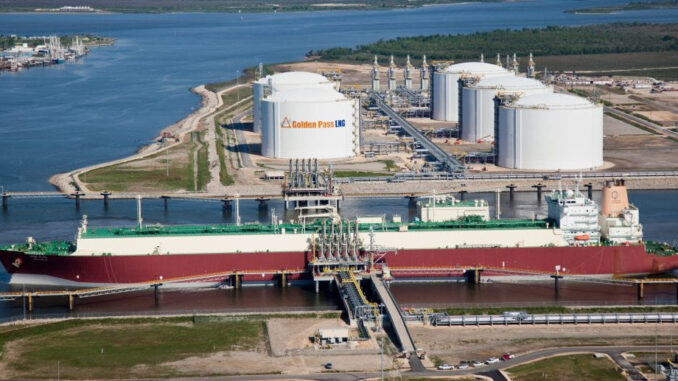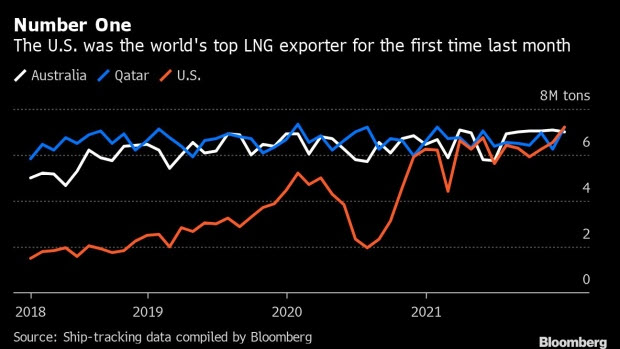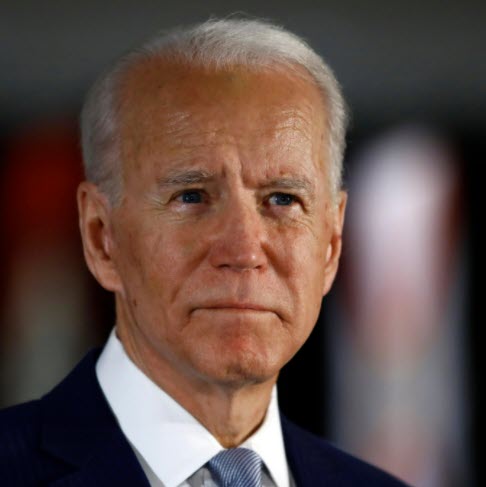
The U.S. was the world’s biggest exporter of liquefied natural gas last month for the first time ever, as projects ramped up production and deliveries surged to energy-starved Europe.
Output from American facilities edged above Qatar in December due largely to a jump in exports from the Sabine Pass and Freeport facilities, according to ship-tracking data compiled by Bloomberg. Cheniere Energy Inc. said last month that it achieved its first cargo from a new production unit at its Sabine Pass plant.

A shale gas revolution, coupled with billions of dollars of investments in liquefaction facilities, transformed the U.S. from a net LNG importer to a top exporter in less than a decade. U.S. natural gas production has surged by roughly 70% from 2010 after a combination of horizontal drilling and hydraulic fracturing unlocked supplies from shale formations across the country.
The first American LNG cargo produced from shale gas was shipped in 2016, and the nation is expected to have the world’s largest export capacity by the end of 2022 after new units start up, according to the U.S. Energy Information Administration.
The U.S.’s position as top LNG shipper may be short-lived, however. Exports were just a hair above those from Qatar and Australia, and any production issues could affect the rankings. Looking further out, Qatar is planning a gargantuan LNG export project that will come online in the late 2020s, which could cement the middle eastern nation as the top supplier of the fuel.



